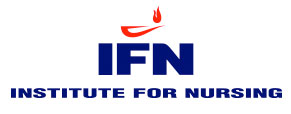ANA’s New President: What Healthcare Leaders Get Wrong About Resiliency
 Jennifer Mensik Kennedy, PhD, RN, the newest president of the American Nurses Association, twitches when she hears the word resiliency.
Jennifer Mensik Kennedy, PhD, RN, the newest president of the American Nurses Association, twitches when she hears the word resiliency.
“For work environments where nurses don’t have a say in their mandatory overtime, they’re short staffed, there’s not enough resources. We say, ‘Well, you just need to be more resilient.’ Well, you shouldn’t have to,” Dr. Mensik Kennedy told Becker’s. “How can we justify the fact that we let them go through bad stuff? No one should have to go through bad stuff or bad things or experience that thing to get a pat on the shoulder and say, ‘Oh, thank you, you’re resilient.'”
Dr. Mensik Kennedy has been a part of the ANA for more than a decade, but on Jan. 1, she became the organization’s president after replacing Ernest Grant, PhD, RN, who has been at the helm since 2018.
She has more than 25 years of leadership experience in healthcare, including her most recent role as director of Oregon Health & Science University’s nursing school in Portland.
Becker’s caught up with Dr. Mensik Kennedy to talk about her priorities for the year, her angst about the word “resiliency,” solutions for the ongoing nursing shortage, whether APRNs should have more responsibilities and thoughts on the rise of workplace violence.
Editor’s note: Answers have been lightly edited for clarity and brevity.
Question: With so many differing agendas from chief nursing officers and various requests from nurses across the nation, how are you prioritizing it all on your fourth day on the job?
Dr. Jennifer Mensik Kennedy: I think what we see is we’ve had a lot of very long-standing issues. And a lot of the issues that we’re dealing with today are the same ones we’ve dealt with for decades. It really is about going back and looking at what’s going to make a difference in the lives of the nurses who are providing our direct patient care, and really what’s going to be best for the community and patients in the public. From a prioritization perspective, that’s how I filter through what should be worked on.
Q: So what’s at the top of the list after the filtering?
JMK: I would say, pretty much together in a way, is clinician well-being along with staffing in the work environment. This is not just hospitals but really all settings in which nurses and advanced practice nurses practice. I think that a lot of times we default to thinking about hospitals, but so many nurses don’t work in hospitals. We really do need to ensure that everyone can be taken care of well and safely with quality in every venue that care is provided.
Q: With clinician well-being, what specifically are you focusing on?
JMK: It does need to be more than just resiliency training or, “How do we make nurses more resilient?” We had issues in the work environment where there were areas that were understaffed, didn’t have the proper resources, and the COVID-19 pandemic really shone a light and helped people realize how bad it was. We could see better when we were really struggling, where all those areas were. Going back and saying, “We just need to make staff more resilient,” or, “They just couldn’t handle it,” is kind of the whole wrong perspective. Or, “How do we make people stronger to deal with bad stuff?” isn’t the solution alone. It really is about providing support, counseling, mental health awareness, allowing individuals to be able to take time off and take care of themselves. Nurses are notoriously bad about taking care of themselves and will take care of others, so they get to that point where they burn themselves out because they’re doing so much for everyone else. We really do need to go back and provide training, education and resources for clinicians to be able to take care of themselves and to help them with their well-being.
Q: Do you see a problem with the word “resiliency”? Do you flinch a little bit when you hear that word?
JMK: [laughs] I do. I twitch when I hear resiliency. Resiliency is a good word, but when I see it being used as a bandage for other underlying issues, such as for work environments where nurses don’t have a say in their mandatory overtime, they’re short staffed, there’s not enough resources. We say, “Well, you just need to be more resilient.” Well, you shouldn’t have to. I think the reason why I don’t like the word resiliency is often we say, “Oh, this person’s resilient because they went through a lot of bad stuff and they’re OK.” Well, how can we justify the fact that we let them go through bad stuff? No one should have to go through bad stuff or bad things or experience that thing to get a pat on the shoulder and say, “Oh, thank you, you’re resilient.” That’s where my angst around the word resiliency comes from, is that we want to train people so that they can deal with more bad stuff as opposed to, can’t it be both? Can we not have, say, some resiliency and a place for resiliency, but we also need to go upstream, figure out the problems and solve the problems that are causing the bad things that we think we need people to be more resilient on.
Q: So starting at the root issue rather than applauding someone getting through something?
JMK: “Oh, you got through really bad times, you know, pat on the shoulder, pizza party, great job. Let’s make more people like you.” No. That has a long-term negative impact on someone’s health, as well. […] It’s not only resiliency training. Resilience is important, but often I see hospitals [and] organizations focus on, “Oh, let’s just make them more resilient.” It’s the thing to talk about as opposed to dealing with the issues that have been going on for decades.
Q: With hospitals launching a number of programs focusing on giving nurses support, whether it be scheduling flexibility or well-being, what aspects do you think are missing? Or, where do you think efforts are falling short for these decadeslong issues?
JMK: As I applaud organizations for doing those things — I want to see organizations continue to do this. In a year, as two, three, four, five years go on, these things shouldn’t fall by the wayside. We have a tendency to apply something and think we’ve fixed everything and then we remove some of the support and continue on with something. That’s the flavor of the month from a management perspective. I’ve been a manager, I’ve been a leader, I’ve been an administrator. I understand there’s so much going on that, “OK, how can we fix the solution?” And then as soon as we think it’s fixed after six months, then we have all these other pressing issues we need to get to and so we kind of forget about this. Then we move on and the wheels fall off again. We’re in this constant cycle. What I want to see is organizations continue this. This is just who you should be [as an organization]: focusing on the well-being of all your clinicians. We have known for decades, even if you’re not a Magnet organization, you could still have those Magnet-like principles.
We know that nurses like control over their practice, they like autonomy, they want to be involved in decisions. And so, how do we give them flexible scheduling and do all these other things but really [give] them a seat at the table where they haven’t been in their practice? They’re looking at policies, making decisions on supplies, what new supplies or changes in supplies we’re having, what that workflow should look like, as opposed to having individuals say, “Here’s what you’re gonna do now.” We really need to embody it as a profession. For me, any discipline is being able to control their practice. It’s not enough to do pizza parties or play recognition. I do also think, though, a lot of organizations during COVID-19, we were “rah, rah rah, the clinicians are amazing and wonderful.” And then that support kind of died off again. Like I mentioned, we get really involved in something and then we move on to the next thing because we think it’s fixed. So I would want organizations to make sure that they continue to make this. This is something that doesn’t go away, and it’s always important because the types of things that clinicians face, that nurses face, are hard. It’s not just COVID, it’s every day.
Q: By the end of 2023, what progress do you hope to see in the nursing workforce? Are there any metrics or specific action items to point to?
JMK: What I would like to see is that nurses feel less stress. What I’d like to see is a decrease in nurses feeling overwhelmed, a decrease in nurses looking to leave the profession, looking to leave their position. Those are some of the first metrics I would also like to see, and I don’t know if we have too much data on this anywhere, but of nurses who did leave the profession or took a break, I’d like to know or see, I’d like to have people come back. I think nurses left during some very stressful and very hard times and we need to welcome them back. Organizations need to reach out to nurses and say, “We’re going to welcome you back and we’d like you to come back.” So I’d like to see organizations, a metric or something around nurses coming back in after the break. I want to make sure that nurses don’t feel that because they left or they felt like they needed to leave because they were a bad nurse or they couldn’t make it or maybe because people thought they didn’t have enough resiliency. Again, from a well-being perspective, it’s OK to take breaks and to leave. You’re not a bad nurse, and you need to do what you need to do for your person. I would like to see metrics of people who are coming back now into the profession after taking a break.
Q: What do you feel like healthcare settings can do to bring back those nurses?
JMK: This might be from a unit and a department level, where when nurses left, what I heard from their system is that they feel like they failed their unit. Or that they left for more money or they left for personal reasons to go travel. I think the units and the managers need to reach out to those individuals, welcome them back and ask them to come back. The unit and departments need to be able to say, “We want you back, we don’t harbor bad feelings.” I think a lot of nurses who left are afraid to go back to their units or the hospitals that they used to work at because they’re afraid they’re going to be seen as a failure or being someone who left their team. I think the units or teams are really going to need to reach out and have some conversations amongst themselves to welcome those individuals back.
Q: On the long-standing debate of whether to expand the role of APRNs, how do you think this debate or conversation will continue this year given ongoing primary care shortages and healthcare access issues?
JMK: Oh my gosh. Yeah, I think APRNs should be able to practice at the full level of education. We have had research for decades that says that, for instance, a family nurse practitioner provides equal if not better care in hypertension. I think it’s very important that we allow advanced practice registered nurses to practice to their full extent. Personally, when I moved to where I currently live, it has taken me over one year to get a new primary care provider because there were no APRNs and no physicians available in our very medium-sized town. The fact that we want to limit individuals from practicing really is a negative impact for the health of the community. We just see provider shortages growing, we see nursing shortages growing. We need to really work together to say, “We want patients to be able to get good quality patient care.” There are way more patients than there are providers. So, how do we make sure we move forward and allow patients to get care without burdens that are completely unnecessary?
Q: Are you hoping for a national consensus on this or do you think it should continue to be a state-by-state decision?
JMK: I would hope that each state would make the decision to allow full practice authority for all APRNs and just move that direction. I respect the rights but I also think that each state should move toward full practice authority with no restrictions and barriers for those advanced practice providers based on their education.
Q: From your view, what are the top one, two or three solutions working to combat the nation’s nursing shortage?
JMK: First would be the work environment. Second would be enrollment faculty. We have way too many individuals trying to get into nursing school and there’s not enough in the faculty. So the faculty shortage, you know, pay, compensation for faculty is important. For sure, those two. So the work environment includes staffing and all of those components, whatever setting that is and then the faculty piece.
Q: You mentioned earlier you want to see nurses less stressed, less overwhelmed by the end of this year. How does the rise in workplace violence involving nurses kind of interplay with all this?
JMK: We absolutely need to take care of this issue around workplace violence. You may or may not know, we had a home health nurse shot and killed in Spokane, Wash., in December. Shortly before that, at the end of November, we had a nurse practitioner stabbed to death by a patient outside the clinic. We really do need to have federal and state-level protections for clinicians to help and monitor the number of acts that are happening against clinicians. We really do need to focus on this. So not only [are] people taking care of very sick patients, but they have to worry about whether someone’s going to bring a gun to work or stab someone.
(This story originally appeared in Becker’s Hospital Review.)




